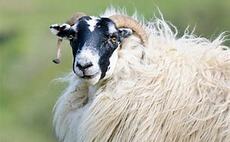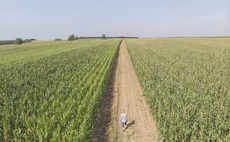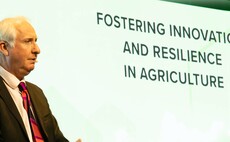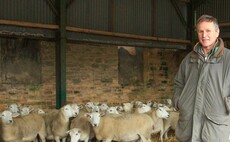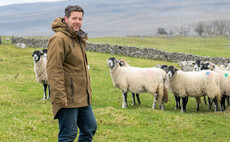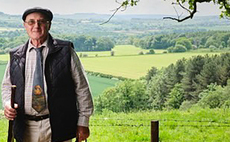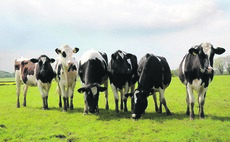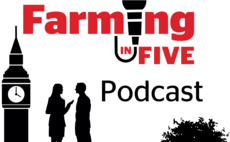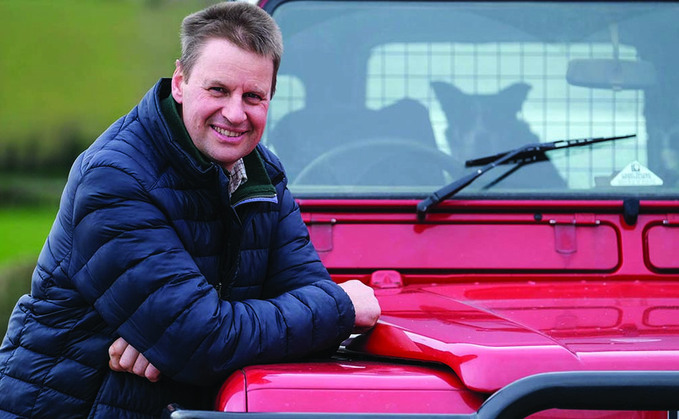
Last year's British Grassland Society's grassland farmer of the year was sheep farmer, John Martin. Richard Halleron went to meet him.
Reacting faster to changing circumstances throughout the year is a key priority for sheep producer John Martin as he strives to grow more grass while, at the same time, getting his 700-strong ewe flock to make better use of it.
Last year John, who lives in Greyabbey, County Down and who farms with his father Billy, took the British Grassland Society's grassland farmer of the year award. And while he finds the bestowing of the honour very humbling, he has no intentions of resting on his laurels.
John says: "We averaged 13.5 tonnes of grass dry matter output per hectare across the farm in 2019.
"With a bit of tweaking it is more than feasible to get that figure up to 14t. But even this level of output is still well below what is possible when it comes to producing grass in this part of the world.
Consistent
"I have been on farms where grass outputs of up to 20 tonnes per hectare are being achieved on a consistent basis. Admittedly, this level of performance might have been secured from selected fields only. But it does set the benchmark in terms of what is possible when it comes to gauging the potential for well managed grassland farms to deliver very significant levels of dairy, beef and lamb output from forage."
So what are the basics when it comes to securing high levels of grassland output? According to John, soil fertility drives everything. He explains: "The farm extends to 75ha. This includes 8ha we have taken on conacre for the past 20 years.
"The soils are a mix of sandy and clay loams. All the fields are soil tested every three years. The aim is to maintain a soil pH value of between 6.2 and 6.5. Lime is spread in order to allow me to meet this requirement.
"The most obvious benefit of maintaining the required pH is that it ensures the maximum availability of soil nutrients to the growing crops.
"Soil testing also provides an accurate guide on how much P and K should be applied on an annual basis."
A commitment to regular re-seeding is a central premise of the grassland management strategies put in place at Gordonall Farm.
"We do not religiously re-seed each field every seven years," says John. "Rather, we assess the quality of all the swards on a regular basis. Growing weed populations are a key indicator of when re-seeding would be required.
"Two years ago we picked-up on a problem with chickweed in some of the fields. This was probably a consequence of the drought conditions prevailing at the time. However, it was a strong indicator to the effect that the field in question should be re-seeded. All the fields, including the conacre land, are managed in exactly the same way."
John follows a three-step re-seeding process. He says: "The existing swards are sprayed-off at the end of the grazing season. The ground is then power harrowed and a crop of Red Start sown out.
"A mix of seed and fertiliser is broadcast on to the prepared seed bed. Red Start is a hybrid brassica; a cross between kale and rape. It is normally easy to grow as an early season forage crop for our January lambing ewes.
Weather
"The ewes love it. Usually we grow between 10 and 20 acres of Red Start annually. The problem we are facing at the moment is that last year's crop hardly took at all because of the atrocious weather conditions at the end of the year. As a consequence, we have had no option but to put the January lambers on land that would normally be kept for the March lambing ewes."
He adds that once the Red Start has been grazed, he goes in with a crop of spring barley, which is followed by the actual grass re-seed.
John says: "The cultivation work required for the Red Start and the barley helps to get rid of the previous weed problems. When it comes to the grass re-seed, we sow out a mix of mid- and late-season perennials; both diploids and tetraploids. Palatability is a key factor in determining which actual varieties are sown out."
Mr Martin runs a 700-strong composite breeding ewe flock. The breed mix comprises Aberfield, Belclare and Highlander bloodlines. Lambing is split between January and March.
He explains: "We lamb 160 ewes in early January. They produce the replacement ewe lambs, which will lamb down in March the following year. The January lambers are given access to the Red Start. The grazing block on-farm is managed primarily to meet the needs of the 540-strong batch of ewes that lamb in mid-March.
"All the lambs born on the farm are reared as replacement ewe lambs or brought through to finishing weights. The decision to breed from our ewe lambs was taken on the basis that we do not carry any unproductive passenger sheep within the business. We normally have a few ewe lambs to sell in the autumn."
The past decade has seen John operate a rotational grazing system. There are a number of bespoke paddocks on-farm. However, larger fields are subdivided using electric fences.
"The March ewes are put out with their lambs as soon as we can batch them up into small groups," he says. "The plan is to have the entire grassland block grazed before the silage ground is closed off around April 10. We normally take a 50-acre first cut. The silage ground receives no slurry with fertiliser spread as soon as the fields are closed-off.
"Slurry is an issue for us: we do not have enough of it now. What we do have comes from dairy heifers that we contract rear over the winter months. But, from a strategic point of view, I would like more cattle within our business. It would give us a better balance in the way that we manage the farm overall.
"Normally we take a first cut of silage around May 25. However, last year grass growth was so good during the spring months that we went in with the mower on May 10. As a rule, we sell our second cut as a standing crop in the field."
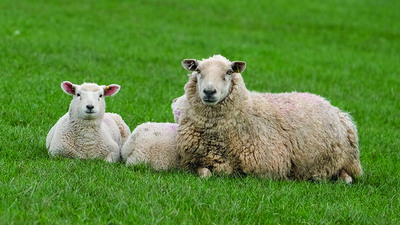
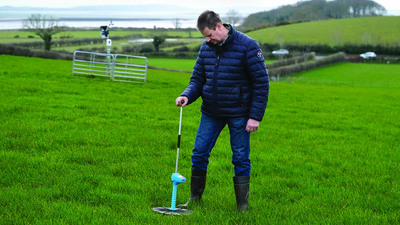
Farm facts
- 700-strong composite breeding ewe flock.
- 160 ewes lamb in early January, and 540 in mid-March.
- Soil compaction issues are addressed in the autumn
- Areas of compaction are remedied using a spike or aerator prior to fields being closed off for winter
- Sub-soiling and land drainage is also undertaken as and when required.
John says that the quality of his 2019 first cut was excellent with a dry matter (DM) digestibility of 77, protein levels at 16 per cent, a metabolisable energy value of 12.3 and a pH of 3.5.
He says: "The DM came in at 25 per cent, which is a bit lower than I want it to be. But what really tripped me up was the acid content of the silage. The pH value was okay but, the lactic acid levels in the forage were way above what they normally would be.
"I only picked up on this issue courtesy of a point raised a farmers' meeting. When I got back home, I checked the lactic acid value referenced in my own silage analysis. It was only then that I picked up on the problem.
"Forage intakes drop considerably when highly acidic silages are fed to ewes. This can easily lead to the development of twin lamb disease in animals carrying twins and triplets.The upshot of it all was me having to include a buffer in the home mixed concentrate fed to the ewes in the run-up to lambing this year."
John adds that he regards the need to respond more quickly to changing grass growing conditions on-farm as a management priority. He views Northern Ireland's Grass Check service as playing a key role in this regard. Established just over 20 years ago by the farmer-funded organisation AgriSearch, the initiative provides high quality, up-to-date grass information to assist farmers with grassland management decisions.
John is one of 24 farmers across Northern Ireland who have been provided with weather stations. These can record a wide range of meteorological data and thereby provide farmers, province-wide, with up-to-date information of grass growing conditions and grass quality in their locality.
John says: "In addition to air temperatures, rainfall levels and wind-related information, the weather station can record soil temperature, courtesy of a probe that goes into the ground.
"All of the information collated is transferred by way of the internet to staff at the Agri-Food and Biosciences Institute. It really is information gathering in real time.
"I measure grass growth rates using an electronic plate metre. With all of the information that is available, I can make decisions that optimise the way grass is utilised on-farm throughout the year. For example, grazing paddocks that have become surplus to requirements can be quickly taken out as baled silage, thereby ensuring that the grass quality available to the sheep is always maintained at optimal levels.
"Grassland management throughout the winter months is also important. The swards need a three-month rest to ensure there is a cover of grass available to the March lambing ewes. Perennial ryegrass swards need a minimum soil temperature of 5.5degC in order to stimulate grass growth.
"I can confirm that the recorded soil temperature on-farm was north of this figure for the three months up to the first week of March; at which time the value fell to 4.4degC."






